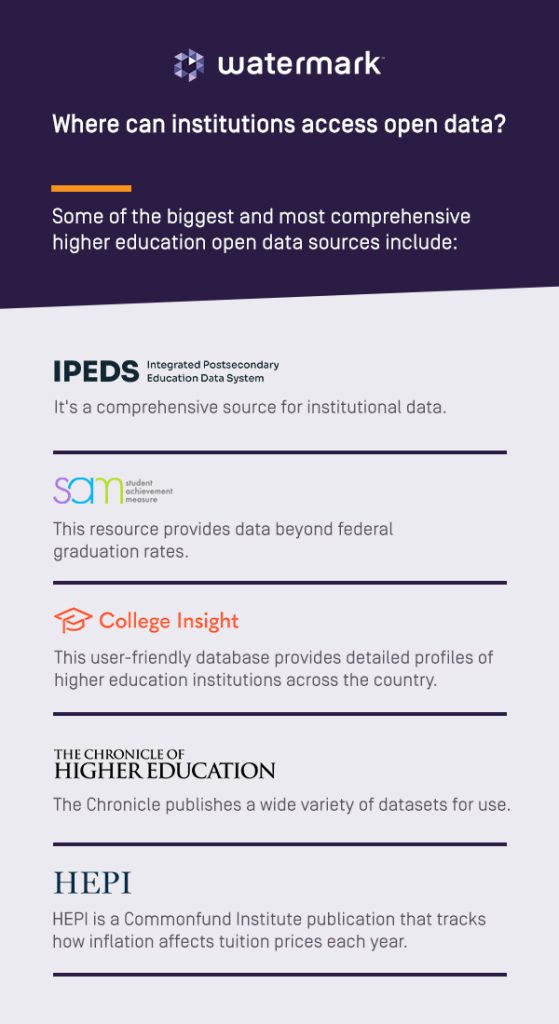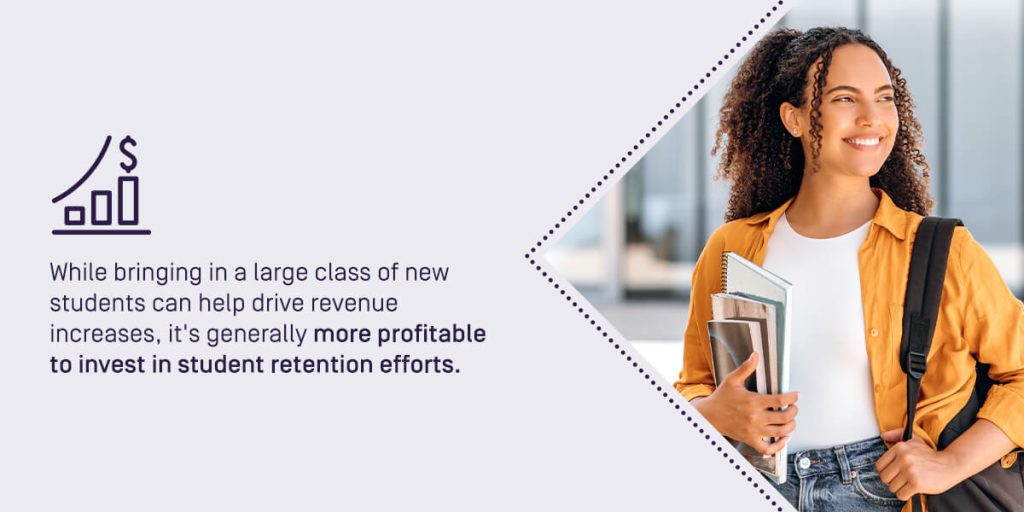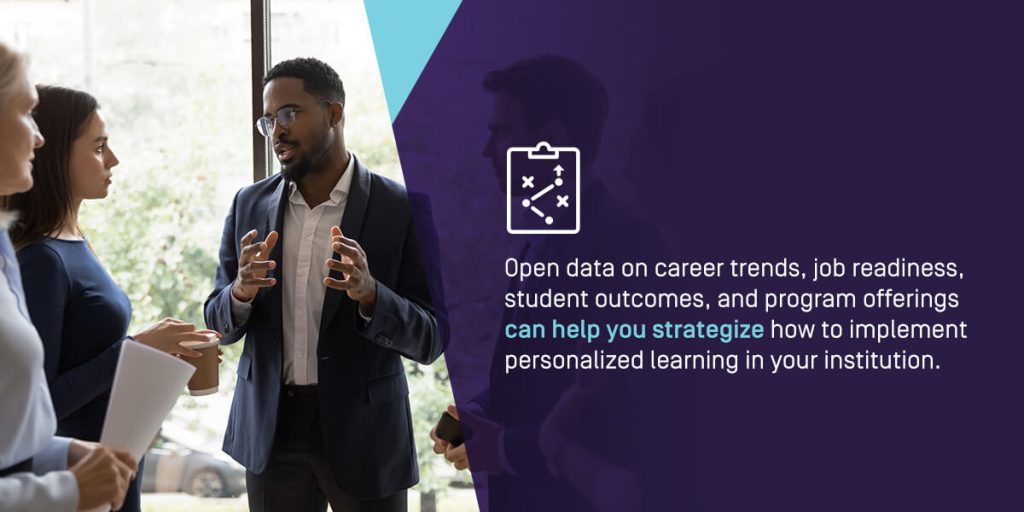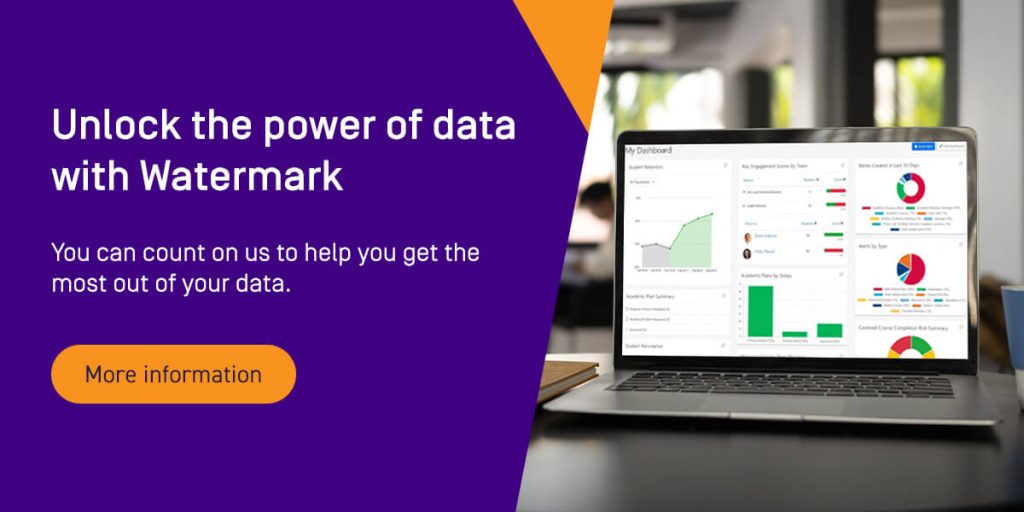




“Data-driven decision-making” may seem like the buzzword of the day, but it’s a critical part of running a successful higher education institution in today’s data-obsessed world. When you can back up your decisions with hard data, you open your institution up to a wealth of opportunities, such as:
And the data you use doesn’t just have to come from your institution. Open datasets are an untapped resource that could unlock powerful insights for enrollment, student retention, faculty research, and more.
Data silos are common in higher education institutions that rely on legacy systems to collect and process their data. While this means each department has easy access to the data it needs to accomplish its core objective — teaching students — it doesn’t necessarily mean the same thing for the whole institution.
Open data is information that anyone can use, reuse, or redistribute as they see fit — with proper attribution, of course. These capabilities mean that open data is interoperable. You can easily combine it with other datasets to create a larger system that delivers real value.
Knowing where to go for valuable open data is also important. Almost every sector and industry has some sort of open database that anyone can access, though some of that data is behind paywalls. Let’s go over some examples.

Some of the biggest and most comprehensive higher education open data sources include:
Other sectors and organizations have their own specified databases, such as finance, criminal justice, and tech. These data repositories are excellent resources for gaining insight into many different areas.
Data is a powerful asset for decision-making at every level of your organization, but you need the proper tools and expertise to know what to do with it. Here are some suggestions for how to use open datasets to improve your higher education institution.
It’s no secret that higher education enrollment has been declining in recent years. And it’s set to continue on this downward path unless institutions can find creative ways to bring in more students.
Analyzing higher ed open data from other institutions can help you identify new targets for recruitment — for example, you might discover you’re overspending on marketing to traditional students. Shifting your approach to attract students from nontraditional backgrounds could be the solution to driving better results.
You can also publish your own open dataset to help prospective students and their families during the college search. Quantifiable data such as average financial aid packages and graduation rates can help families make the most informed decision.
Institutions can also use public labor market data to dispel the rising myths about the value of higher education. For example, labor market data from open sources like the U.S. Bureau of Labor Statistics (BLS) helps your institution connect existing degree programs directly to specific career paths. This link can help you demonstrate your institution’s value to current and prospective students.

While bringing in a large class of new students can help drive revenue increases, it’s generally more profitable to invest in student retention efforts. After all, each student who enrolls in your institution is an investment — and when students leave, you miss out on a chance to make a strong return on that investment.
Open student success data from competing institutions makes an excellent benchmark for measuring retention rates at your own institution. You can easily find this data on the SAM website as long as the institution you want to compare has submitted it.
Some other helpful data elements to monitor include:
Plus, software tools equipped with predictive analytics can use that data to help you identify which students may need additional support and calculate their individual risk levels. This information can help your administration reach out to those students and direct them toward helpful resources.
Analyzing open datasets from other institutions can help you identify opportunities to cut costs — or to reallocate vital funding dollars to promote better learning outcomes.
For example, you may discover that graduates of a popular degree program are graduating into an oversaturated labor market, which reduces their chances of getting the jobs they want. Downsizing this program can save you valuable funds that you can reallocate to other areas of your institution.
You might also discover that fewer institutions of your size are offering a specific program due to lower demand in the job market. You then have enough evidence to back up a decision to close the program and save money.
Market research is critical for maintaining your institution’s edge, and open datasets offer a wealth of information for this purpose. Analyzing data from other educational institutions can help you improve by revealing where you stand in regard to your competitors.
Some key data elements to pay attention to include:
Another one of the most helpful higher ed open data uses is gaining context for any disparities that exist between your institution and others like it. For example, you might notice graduation rates for certain student demographics are lower at your institution than at others.
Further analysis could reveal several possible reasons for this disparity. You might find that your competitors give out more financial aid on average, or that they’re more selective in their admissions process. Whatever the case, this information can help you form a data-backed strategy for improving your school’s reputation.
Every student begins their educational journey with unique aspirations and interests, which is why many institutions are rethinking the traditional one-size-fits-all degree path. Also known as interdisciplinary studies, learner-centric education is a rapidly growing trend that’s disrupting the higher ed landscape.
Personalized degree programs can help boost student engagement by allowing them to play a more active role in their education. But these initiatives are only possible with the help of big data.

Open data on career trends, job readiness, student outcomes, and program offerings can help you strategize how to implement personalized learning in your institution. And you can use advanced data collection and analytics tools to extract valuable insights about each student’s interests that can help them tailor their education to their individual goals.
One of the simplest higher education uses for open data is encouraging faculty to use it in their research. Open data can be a low-cost benchmark for faculty members in their own research, especially in STEM labs where data comes at a premium.
Additionally, you could assess typical research awards from other institutions to determine whether you are effectively allocating the funding you get. Could money from other initiatives go to faculty research projects?
One of the biggest contributing factors to plummeting enrollment rates among traditional students is the perception that higher education isn’t worth pursuing for the job they want.
But this idea couldn’t be further from the truth — according to the Association of Public & Land-Grant Universities (APLU), college graduates are significantly less likely to face unemployment during hard times.
That said, institutions need to know that their graduates are adequately prepared to face a constantly evolving job market. Open data provides a benchmark for student outcomes, which can help you understand your institution’s performance and ability to teach students the skills they need to survive in an increasingly tech-oriented world.
Transparency is a major concern with all types of higher education institutions, as hidden prices and tuition hikes can suddenly change a student’s ability to continue their education.
As we mentioned before, publishing your own open dataset provides prospective students and their families with the information they need to make a data-driven decision about which institution to attend. But that doesn’t take into account the data you don’t necessarily want to publish.
Being willing to publish all your institutional data — including information that may be negative — demonstrates your commitment to honesty and transparency, which makes you appear more credible to students and other key stakeholders. When your stakeholders know they can trust you to be honest with them, they’re more likely to be loyal to your institution and help you achieve greater outcomes.
Are genuinely needy students really getting the aid they need to complete their education? Another major contributor to the decline in enrollment among college-age individuals is the high price tag that comes with the degree. And when the economy is in poor shape, paying for college education is less attainable for students of every background.
Combining publicly available financial data with powerful analytics tools can help you determine how to optimize your annual aid budget to best serve your student body.
Your financial aid department can also use these insights to create personalized aid packages to meet more specific student needs. This approach can also help with scholarship distribution.
Plus, real-time feedback and visibility into your aid processes help you gauge how well your strategy is working, enabling you to commit to continuous improvement.
Since 2020, many institutions have been investing heavily in digital tools as part of their digital transformation. According to Inside Higher Ed’s 2023 survey, 83 percent of college and university presidents said data-related digital transformation initiatives are essential to their strategy moving forward.
But digital transformations — and similar initiatives — are complex. It’s easy for more traditional institutions to get caught up in the weeds of smaller tasks while their bigger projects stall and lose money.
Narrowing down your list of to-dos to focus on only the most important projects is essential for success, but when there are so many different projects on your list, it can be difficult to choose which ones to prioritize. That’s where open data comes in.
You can use data from other institutions to determine which initiatives are most important to your overall strategy moving forward. Where have your competitors seen the highest returns on investment? How can you use these insights to differentiate your institution?
Generally speaking, today’s students are intimately familiar with modern technology. And most faculty members have at least a working knowledge of the tools they need for their courses.
But the modern technology landscape is constantly changing — just look at how quickly artificial intelligence (AI) took over the international conversation. Greater adaptability and data fluency are going to be essential for success in an increasingly digital world, and most degree programs don’t do enough to incorporate these competencies into their curricula.
Open datasets are a low-cost solution that faculty can easily incorporate into coursework. You don’t have to invest valuable resources into building new datasets, and most are either free or available at a low cost. In fact, most of your investment will go to the tools you’ll need to analyze that data.
Big data already plays a huge role in higher ed, and it’s only going to increase over time. Investing in innovative data analysis tools is one of the best ways for institutions to begin the journey toward a more data-driven organization. That’s where we come in.
At Watermark, our mission is to help today’s higher education institutions better serve their students through data-driven decision-making. Our fully integrated software solution provides streamlined data collection and analytics capabilities for student success, curriculum mapping, course evaluations, and more.
You can count on us to help you get the most out of your data. Contact us for more information or request a live demonstration to see how our solution can help you extract real value from open data.






























































































































































































































































































































































































